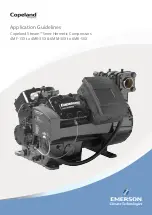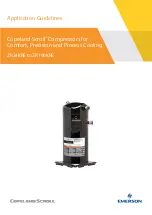
13
PROBABLE CAUSE
Defective motor/pressure switch.
PROBABLE CAUSE
Possible defective safety relief valve.
Excessive air tank pressure.
PROBABLE CAUSE
Fittings are not tight enough.
PROBABLE CAUSE
Defective or rusted air tank.
PROBABLE CAUSE
Damaged inlet (reed) valve.
TROUBLESHOOTING
REMEDY
Replace.
REMEDY
Operate safety relief valve manually by pulling on ring.
If it still leaks, it should be replaced.
Defective motor/pressure switch. Replace.
REMEDY
Tighten fittings where air can be heard escaping. Check
fittings with soapy water solution.
Do not overtighten.
REMEDY
Air tank must be replaced.
Do not attempt to repair
air tank! Do not weld, repair or make modifications.
REMEDY
Contact Customer Service
Symptom 4. Air continues to leak at motor/pressure switch release valve while motor is running.
Symptom 5. Air leaks from safety relief valve.
Symptom 6. Air leaks at fittings.
Symptom 7. Air leak in air tank.
Symptom 8. Air blowing from inlet filter.
PROBABLE CAUSE
Pressure regulator knob not turned to high enough
pressure or defective pressure regulator.
Restricted air intake filter.
Air leaks.
Air compressor is not large enough for air
requirement.
REMEDY
Adjust pressure regulator knob to proper setting or
replace.
Clean.
Check for leaks and repair.
Check the accessory air requirement. If it is higher than
the CFM or pressure supply of the air compressor, you
need a larger air compressor.
Symptom 9. Insufficient pressure at air tool or accessory.














































